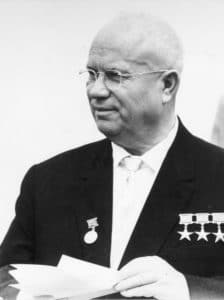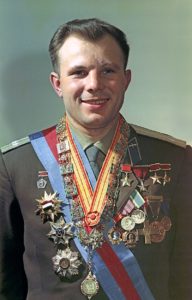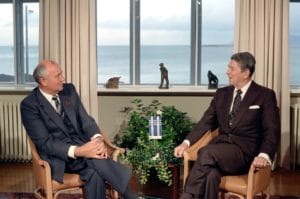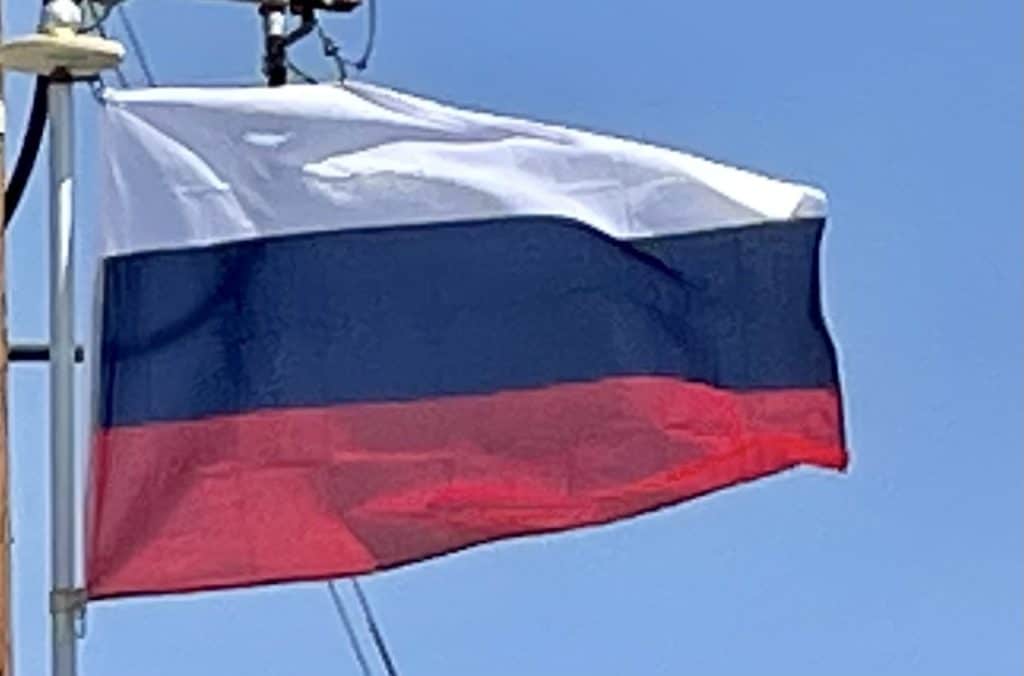
After Stalin’s death and a short period of collective rule, the new leader Nikita Khrushchev denounced Stalin and launched the policy of de-Stalinization. The penal labor system was reformed and many prisoners were released and rehabilitated (many of them posthumously). The general easement of repressive policies became known later as the Khrushchev Thaw. At the same time, tensions with the United States heightened when the two rivals clashed over the deployment of the United States Jupiter missiles in Turkey and Soviet missiles in Cuba.
In 1957, the Soviet Union launched the world’s first artificial satellite, Sputnik 1, thus starting the Space Age. Russia’s cosmonaut Yuri Gagarin became the first human to orbit the Earth, aboard the Vostok 1 manned spacecraft on 12 April 1961.

Following the ousting of Khrushchev in 1964, another period of collective rule ensued, until Leonid Brezhnev became the leader. The era of the 1970s and the early 1980s was later designated as the Era of Stagnation, a period when economic growth slowed and social policies became static. The 1965 Kosygin reform aimed for partial decentralization of the Soviet economy and shifted the emphasis from heavy industry and weapons to light industry and consumer goods but was stifled by the conservative Communist leadership. In 1979, after a Communist-led revolution in Afghanistan, Soviet forces entered that country. The occupation drained economic resources and dragged on without achieving meaningful political results. Ultimately, the Soviet Army was withdrawn from Afghanistan in 1989 due to international opposition, persistent anti-Soviet guerrilla warfare, and a lack of support by Soviet citizens.
From 1985 onwards, the last Soviet leader Mikhail Gorbachev, who sought to enact liberal reforms in the Soviet system, introduced the policies of glasnost (openness) and perestroika (restructuring) in an attempt to end the period of economic stagnation and to democratize the government. This, however, led to the rise of strong nationalist and separatist movements. Prior to 1991, the Soviet economy was the second largest in the world, but during its last years, it was afflicted by shortages of goods in grocery stores, huge budget deficits, and explosive growth in the money supply leading to inflation.

By 1991, economic and political turmoil began to boil over as the Baltic states chose to secede from the Soviet Union. On 17 March, a referendum was held, in which the vast majority of participating citizens voted in favor of changing the Soviet Union into a renewed federation. In August 1991, a coup d’état attempt by members of Gorbachev’s government, directed against Gorbachev and aimed at preserving the Soviet Union, instead led to the end of the Communist Party of the Soviet Union. On 25 December 1991, the USSR was dissolved into 15 post-Soviet states.
Post-Soviet Russia (1991–present):
In June 1991, Boris Yeltsin became the first directly elected president in Russian history when he was elected President of the Russian SFSR, which became the independent Russian Federation in December of that year. The economic and political collapse of the Soviet Union led to a deep and prolonged depression, characterized by a 50% decline in both GDP and industrial output between 1990 and 1995, although some of the recorded declines may have been a result of an upward bias in Soviet-era economic data. During and after the disintegration of the Soviet Union, wide-ranging reforms including privatization and market and trade liberalization were undertaken, including radical changes along the lines of “shock therapy” as recommended by the United States and the International Monetary Fund.
